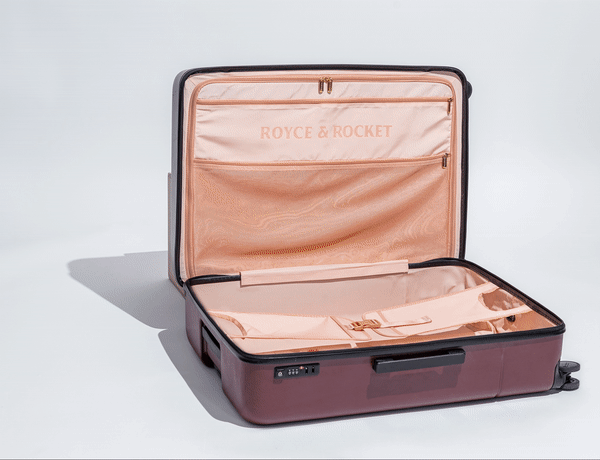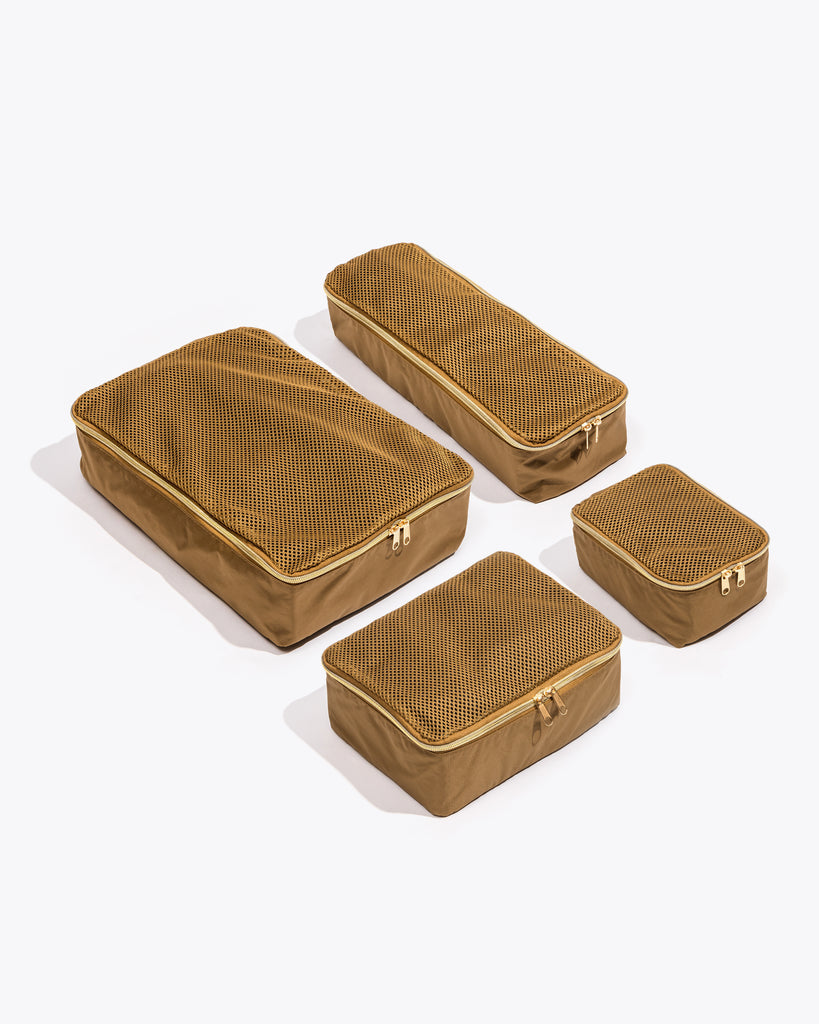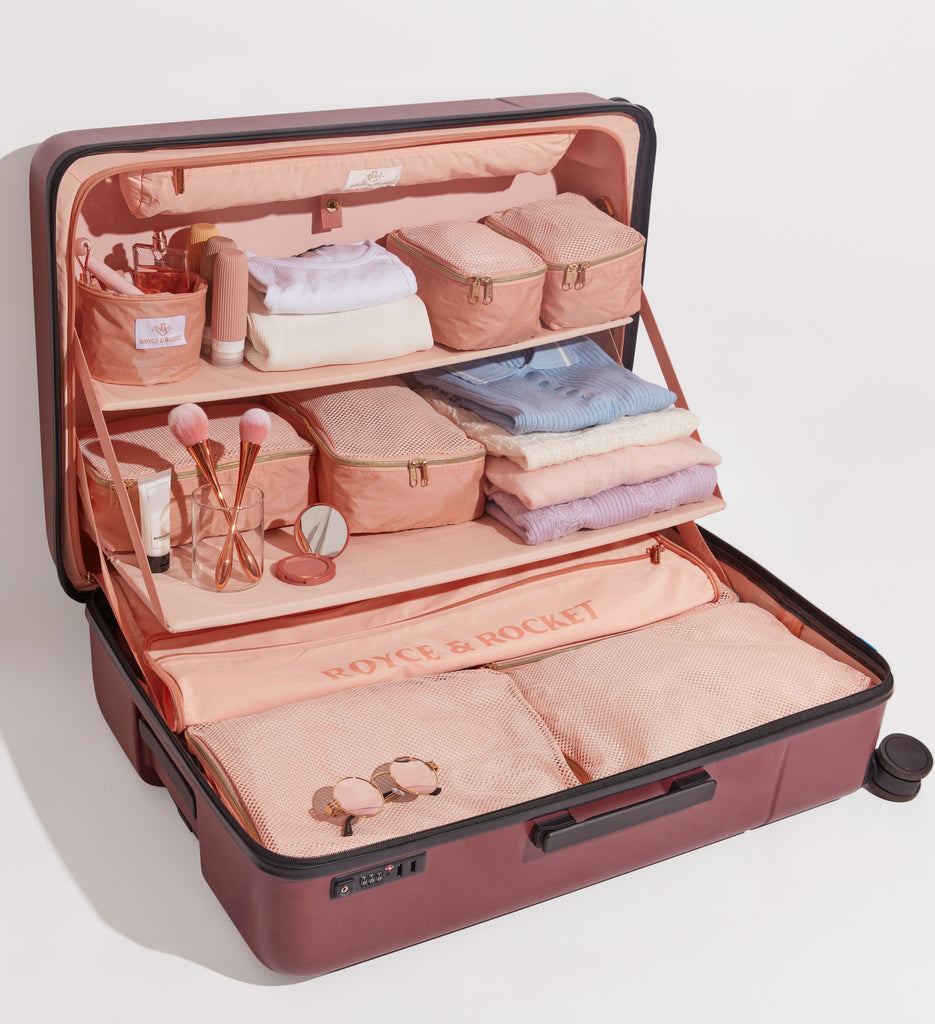When’s the last time you thought about your suitcase material? Like most travelers, the answer is probably never. But, understanding what material your suitcase is made out of will lead to a better bag and, in turn, a better travel experience.
Why Hard-side Suitcases Matter
Before we can understand what hard-side suitcase is the best, first we must establish why you should choose a hard-side suitcase to begin with. hard-side suitcases present much more benefits to users than duffle bags or soft luggage.
For one, hard-sided large luggage is much sturdier than soft duffle bags. As a result, you can feel good knowing you’ll have protection against sharp objects that threaten to rip and tear a softer, more vulnerable piece of luggage. Similarly, your suitcase can better stand up against stains, spillage, water, and much more.
Lastly, hard-side suitcases just look better. They have that clean finish, those sharp edges, and don’t get us started about decking your large luggage with stickers and mementos from your favorite travel spots.
All in all, hard-side luggage is far superior than soft duffle bags. But what hard-side suitcase material is best? Let’s dive in and find out.
Polypropylene
It’s easy enough to see why Polypropylene made our list: the material is both tough and durable, which are the two big markers that make any quality suitcase. To top it off, Polypropylene is a moderately flexible material that gives good leeway for those overzealous packers.
However, there are some downsides to Polypropylene. For one, the material is susceptible to high heat and, as a result, is flammable. While there aren’t too many instances of people’s suitcases bursting into flames, it’s still something to be cognizant of during your shopping.
Furthermore, Polypropylene is susceptible to UV degradation: so maybe on your next getaway, keep that luggage out of the Miami sun.
What exactly is Polypropylene? It’s a versatile synthetic resin used to craft a vast majority of hard-side suitcases.
Polypropylene is a resin created from the polymerization of polymer, which basically means that its a hardened collection of large molecules that results in strong, durable, often clear plastic.
Bottom Line: Polypropylene is a durable, flexible suitcase material that creates a strong bag you can count on. But polypropylene doesn’t do well with high temperatures and, in rare cases, can be flammable.
ABSThe next suitcase material on our list is ABS. With a cheap production rate, ABS are affordable, widely-available hard-side suitcases that any shopper can find.
But just because ABS luggage is inexpensive and easy to find doesn’t mean it’s the best.
Because ABS materials are so rigid and inexpensive, they’re prone to developing cracks and fissures along the lining. If you’re shopping for a quality suitcase that will last you years to come, you may want to skip over ABS for something a bit more long-lasting.
But what is ABS? Hint: we’re not talking about those Bridgerton bods (shoutout Lord Bridgerton what’s up).
ABS stands for Acrylonitrile Butadiene Styrene, which are three thermoplastic polymers that blend together to create a common hard-side suitcase material.
Bottom Line: While an ABS suitcase may be some of the cheaper options on the market, they crack and break easily. You’ll more than likely need to replace your ABS suitcase a few years after your initial purchase.
Polyethylene TerephthalatePolyethylene Terephthalate (otherwise known as PET) is a synthetic material typically used to manufacture portable containers like food and drink containers, shopping bags, microwave containers, and more. As a result, this material happens to be incredibly malleable, durable, and lightweight.
Unfortunately, those are about the only benefits to choosing luggage made with PET. There are significant downsides to Polyethylene Terephthalate.
Perhaps the biggest drawback are health concerns: according to chemists, Polyethylene Terephthalate produces both trioxide and phthalates with antimony. If you don’t know what those terms are, take note. Trioxide with antimony can cause cancers while phthalates are endocrine disruptors.
What’s more? Polyethylene Terephthalate is equally harmful to the environment as manufacturing PET produces substantial toxin levels. How harmful? For a comparison, manufacturing a Polyethylene Terephthalate water bottle produces 100 times more toxins than manufacturing a glass bottle of the same size.
So while Polyethylene Terephthalate can seem like an affordable, durable large luggage option at first, the health and environment risk certainly is not worth a purchase.
Bottom Line: Polyethylene Terephthalate (or PET) luggage is durable, flexible, lightweight and long lasting. However, too much exposure to PET luggage can lead to environmental and bodily risk, including the risk of developing some cancers or enduring endocrine disruption. Save your money and buy a suitcase that’s better for you and for the world.
Aluminum
As you might guess by the name, aluminum is one of the most durable suitcase materials in the industry. With its flexible form and weatherproof capabilities, aluminum luggage can take a serious beating and give you those hard earned travel battle scars you’ve been dreaming about.
Still, there are downsides to aluminum bags.
Perhaps the biggest disadvantage with aluminum material is also its main benefit: the material is so rigid that it’s impossible to stuff and expand your luggage with more clothes than its maximum capacity. In that sense, you have to be a much more deliberate packer than you would be with a duffle bag.
Aluminum suitcases are also incredibly heavy. Be prepared if you want to hoist your aluminum bag into the overhead compartment. Aluminum is also a fairly expensive material, so most of its cases will be at the higher end of many shoppers’ price point.
Bottom Line: Aluminum is a quality material for hard-side luggage. With its strong, unbreakable form, you can expect an aluminum suitcase to provide durability for many years. However, aluminum suitcases are very heavy and are often on the more expensive end.
Polycarbonate
If you’re shopping for a strong but lightweight material, Polycarbonate luggage may be exactly what you’re looking for. The material is both flexible and durable, making dents easy to pop out and put your luggage back to its original form.
It’s also impact resistant, which means that if you drop it while hoisting it off a baggage carousel, then your luggage will bounce to the side rather than crack open and expose all of your dirty laundry in the middle of LAX (not that we’re speaking from personal experience or anything).
As a type of thermoplastic, Polycarbonate materials are often used in engineering due to their strength and heat-resistant properties.
But what really sets Polycarbonate from its competitors is its low-weight ratio. And, as any engineer will know, a low-weight ratio means that Polycarbonate is lightweight but not at the compromise of strength.
Bottom Line: Overall, Polycarbonate is a lightweight, durable material that doesn’t have too many downsides. However, it does tend to lean on the expensive side, and sometimes it isn’t as widely available as other suitcase materials.
The Verdict: Polycarbonate For The Win
While aluminum is a close second, you simply can’t beat the flexibility, titan-like strength, and impact-resistant properties of Polycarbonate.
To top it off, Polycarbonate is an ideal material to be recycled. So, when you buy recycled Polycarbonate, you get an almost-indestructible bag all while helping the environment. Sounds like a win-win to us.





